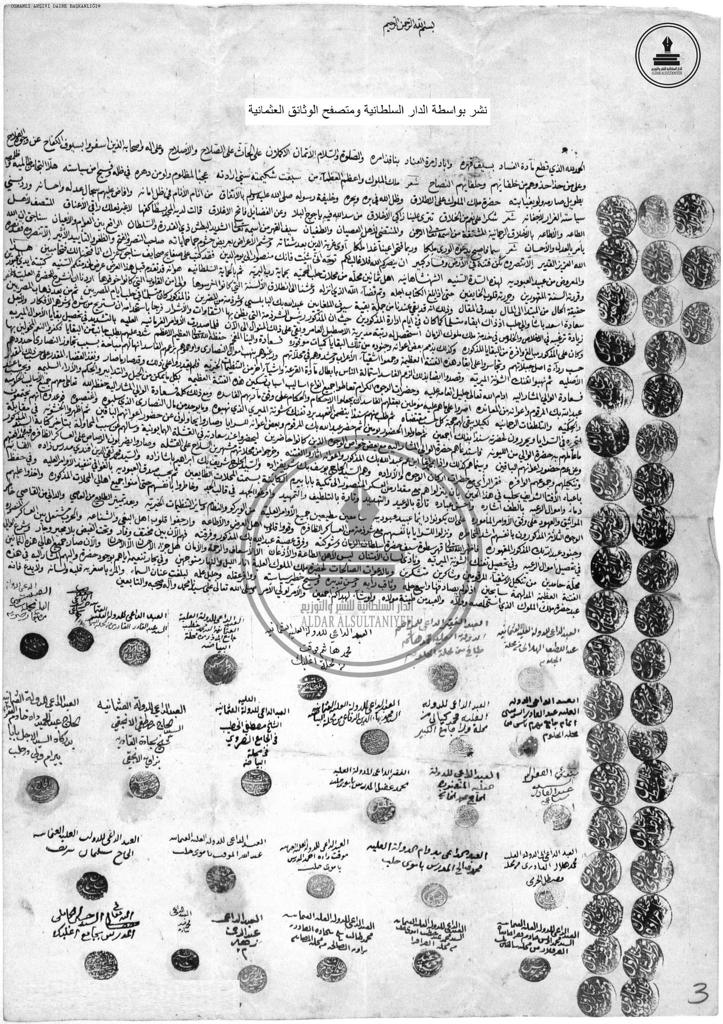Reading into the Meshura hujjah — on the “uprising of Aleppo” in October 1850
The authentication document — in Arabic, hujjah — of the Blunt desert-bred import Meshura is not done yielding more information. One year after having published its translation and commentary into English in the book The Arabian Horses of Abbas Pasha, I keep learning new things about it.
As background, Meshura great-grand-dam, “The Mare of Daghir”, a Saqlawiyah Ubayriyah of the Marighi strain, was imported to Egypt by Abbas Pasha. The episode of the sale of this mare is narrated in the hujjah, as follows:
“This mare was bought by Abbas Pacha from the house of Dirri and the sale transaction took place in the house of Jad’aan in the presence of Mujayhim ibn Dari and her price was 4000 ghazis [two illegible words] Muhammad Ali Sharif with Ali Bek and he was our guest in [three illegible words, including one place name] before the uprising of Aleppo ([illegible word] (the verification of the date of the year needs to be done)“;
I was unable to unlock the meaning of that “uprising of Aleppo” (in the Arabic text of the hujjah qawmat Halab), nor to date it precisely — until now. While browsing a selection of Ottoman archives online, I came across a letter (below) addressed by the Muslim notables of Aleppo to the Ottoman Sultan Abdul-Mejid I, about this event. The letter dates the event to the year 1850.

From this letter, it turns out that the “uprising of Aleppo” refers to events instigated in the city by a certain Abdallah Bek al-Babilssi and his partisans, originally elements of the Egyptian army that invaded Syria under Ibrahim Pasha. This man appears to have been remained in Aleppo after the withdrawal of the Egyptian troops, and to have been given a military function by Ottoman authorities. It also appears that he and his men owed money to the Ottoman treasury, and that they egged on neighboring Bedouin tribes to join them in orchestrating attacks on the thriving Christian community of Aleppo, and loot its assets, in part to pay off debt. The letter details hwo Muslim notables intervened together with the Ottoman governor Mustafa Pasha, to ensure the return of looted assets, the punishment of the culprits and the return of peace to the city.
The Arabic Wikipedia entry for qawmat Halab explains the events, and references a scholarly article in English, link here, which does so just as well. The first page is free. It dates the events to October 17, 1850, and says that the rioting lasted for two days.
The Meshura hujjah indicates that the purchase of Meshura’s great-granddam by Abbas Pasha agents — Ali bek but also Muhammad Ali Sharif — likely the father of Ali Pasha Sharif — had occured just before the “upsrising of Aleppo”.
Oh, how interesting! Thank you for the history lesson.
This is honestly so cool. I think my favorite thing of learning more about these horses is how they and their people are contextualized into wider historical events. There’s always something new to learn, or understand. Thank you for sharing 🙂
As an aside — there is additionally an English language wiki page for this event as well, which calls it The Massacre of Aleppo (1850) – https://en.wikipedia.org/wiki/Massacre_of_Aleppo_(1850)